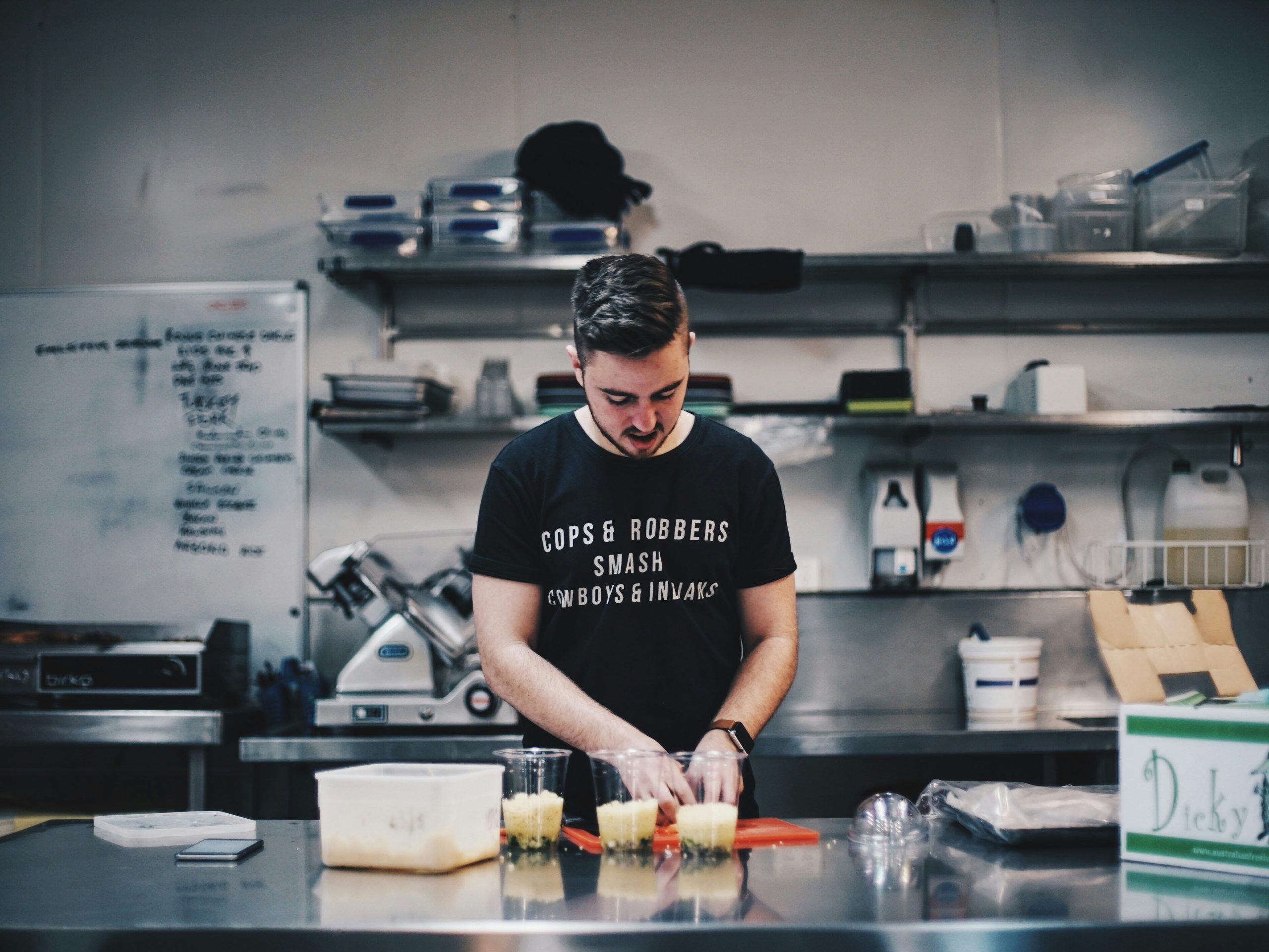
In the world of franchising, few sectors are as iconic or consistently popular as Quick Service Restaurants (QSR), commonly known as fast-food or fast-casual restaurants. From the golden arches of McDonald’s to the sandwich shops and pizza chains in every town, QSR franchises have long been a favorite of both customers and investors. But is that still true today? Absolutely – in 2025, quick service restaurants remain a top franchise investment, and for good reason. This industry spotlight will explore why QSR franchises continue to thrive, what makes them attractive to franchisees and lenders, and what to consider if you’re thinking of jumping into the fast-food franchise game.
A Large and Resilient Market
One reason QSR franchises are perennially popular is the sheer size and stability of the market for convenient, quick meals. Food is a basic necessity, and despite changing consumer tastes, the demand for affordable dining out is steady. In fact, food-related franchises account for at least 30% of all franchises in the United States, and generate a significant portion of franchise employment. Fast food in particular holds a large chunk of that, making up about a quarter of all food franchise units. The dominance of food franchises indicates a robust market – people spend billions each year on quick-service dining.
More importantly, QSR franchises have proven resilient through economic ups and downs. During economic downturns or recessions, consumers often “trade down” from more expensive dining to cheaper fast-food options. For example, instead of a full-service restaurant dinner, families might opt for a value meal at a fast-food chain to save money. This dynamic was observed in past recessions and again in recent years – analysts note that when budgets are tight, consumers still treat themselves to small indulgences like a burger or pizza, favoring brands that offer value. A Business Insider analysis in early 2023 highlighted that fast-food chains like McDonald’s, Taco Bell, and Domino’s are positioned to do well in recessions, as people seek convenient, low-cost meals.
Even in the face of global challenges like the COVID-19 pandemic, many QSR franchises adapted quickly with drive-thru, delivery, and takeout, often faring better than full-service restaurants. The drive-thru model in particular has been a savior for the industry – and continues to be a backbone of QSR success.
The bottom line: the market for quick-service food remains massive and reliably durable. Investors know that while no business is “recession-proof,” a well-run fast-food franchise has a good chance of weathering storms compared to many other businesses.
Strong Brand Recognition and Built-In Customer Base
When you invest in a QSR franchise, you’re usually investing in a well-known brand that has national (or even global) recognition. This is a huge asset. Brands like McDonald’s, Subway, KFC, Burger King, Starbucks, Chick-fil-A, and many others have spent decades and countless marketing dollars to ingrain themselves in consumer minds. As a franchisee, you benefit from that brand power immediately.
Customers are often already fans of the brand and will seek out your location as soon as it opens. There’s a level of trust and familiarity – people know what to expect from the menu and quality. This means you typically ramp up faster than an independent restaurant would. For example, if you open a Taco Bell in a town that loves Taco Bell, you’ll likely have a line on day one from pent-up demand. Contrast this with an unknown burger shop – it could take a lot longer to build a following.
Brand strength also comes with proven systems and support. QSR franchisors usually have finely tuned operational procedures, supply chain logistics, and ongoing R&D for menu innovation. They regularly advertise on a regional or national level – think TV commercials, app promotions, etc. – that you as a local owner benefit from without bearing the full cost. The collective advertising fund and brand presence keep the franchise constantly in consumers’ view.
From an investment perspective, lenders also appreciate strong franchise brands. A bank is often more willing to finance a franchisee opening a well-known fast-food restaurant because they have confidence in the franchisor’s track record. They can look at the historical performance of hundreds or thousands of other franchise units. The familiarity reduces perceived risk. In fact, some lending programs exist specifically for certain QSR brands due to their established success rates.
In short, buying a QSR franchise means you’re not starting from scratch – you’re riding on the momentum of a powerful brand with an existing customer base and support system.
Impressive Unit Economics and Growth Potential
Quick service restaurants can offer impressive unit economics when run effectively. What does that mean? Essentially, the relationship between investment cost, sales volumes, and profit margins can be very favorable.
Consider that top QSR franchises often have annual sales that reach high six or seven figures. For instance, an average McDonald’s might easily do $2.5 million a year in revenue, with some doing much more. While not all concepts hit McDonald’s-level numbers, many franchised fast-food restaurants can generate $1M+ in annual sales. With efficient operations, a well-run store can net a healthy profit margin on those sales.
Of course, margins in food can be thinner (food and paper costs, labor, etc. take a chunk), but the high volume can compensate. The key is volume: QSRs are built to serve a large number of customers quickly, which can lead to significant daily revenue. For example, drive-thru lanes can handle transactions in under a minute and move dozens of cars per hour. Digital ordering has increased throughput further, allowing more sales without expanding physical space.
Another advantage is the potential for multi-unit expansion. Many franchisees start with one unit and soon scale to owning several locations once they see the model works. QSR franchises lend themselves to this because once you master the operations of one, adding additional units can increase your overall profitability significantly. The franchisor often supports growth of successful operators. And given that demand is widespread, there are usually opportunities to open additional locations in neighboring territories or even other cities. Owning multiple fast-food franchises can turn you into a significant enterprise – some franchisees operate dozens of units and generate substantial wealth.
Let’s also talk about growth trends. According to the International Franchise Association’s economic outlook, the QSR segment continues to expand. In 2024, QSR franchise units in the US were expected to grow by about 2.2% (adding over 4,300 units). This growth is second only to the personal services sector. Going into 2025, easing economic conditions and lower interest rates are predicted to further spur franchise growth in many sectors – and QSR is likely to grab a good share of that. Franchise brands are actively seeking new franchisees to expand into untapped markets and to introduce new concepts (for instance, healthier food fast-casual brands riding on QSR coattails).
The continued growth of delivery apps and ghost kitchens also intersects with the QSR industry. Some franchise brands have found ways to leverage these trends for additional revenue streams (for example, a chicken wings brand operating out of a burger franchise’s kitchen after hours). Being in the QSR space puts you in a good position to capitalize on such innovations in food delivery and tech.
In summary, the numbers can be compelling. If you invest, say, $400k in a fast-casual franchise that then generates $800k in annual sales with a, let’s say, 15% profit margin, that’s $120k a year profit, which is a solid return on investment. And if you can replicate that three times over a few years with multiple units, you’re looking at a substantial business portfolio. Many entrepreneurs see QSR franchising as a scalable investment with both cash flow and equity build-up (the resale values of successful franchise units can be high, too).
Challenges and Considerations
No investment is without challenges, and it’s important to have a balanced view. While QSR franchises are attractive, potential franchisees should consider:
- High Initial Investment: The most famous QSR brands often come with high startup costs. Real estate, build-out, and equipment for a restaurant can be expensive. For instance, the cost to start a fast-food franchise like McDonald’s can range from around $1.3 million up to $2.5 million or more, including a franchise fee that might be around $45k and a requirement for substantial liquid assets. Other brands vary, but it’s not uncommon for total investment to be several hundred thousand dollars. This means higher financing needs and more capital at risk. Newer fast-casual concepts might be lower cost, and things like food trucks or small footprint kiosks offer cheaper entry, but the big players require big bucks.
- Operational Intensity: Running a fast-food franchise is not an absentee endeavor, at least not initially. It’s a hands-on, operationally intense business. You have to manage a team of mostly hourly employees (sometimes high-turnover positions), maintain quality and speed, handle inventory ordering and waste, and adhere to strict brand standards. The hours can be long – many QSRs are open early for breakfast until late night. As an owner, you must ensure the store runs like a well-oiled machine. This can be stressful and requires strong management skills. Many owners eventually hire managers for each unit, but you still need to manage the managers and stay on top of the business metrics.
- Thin Margins and Volume Requirements: As mentioned, profit margins in food service are not huge per item. You make money in pennies on each burger or coffee and rely on selling thousands of them. This exposes you to risks: increases in food costs (e.g., a spike in beef prices), rising labor wages, or even slight downturns in sales can squeeze margins. You have to keep an eye on cost controls constantly. Also, royalty and advertising fees (typically a percentage of sales paid to the franchisor) take a slice off the top. It’s a game of volume, and you must sustain that volume.
- Competition: The QSR space is crowded. In any given area, there might be multiple burger joints, pizza places, and coffee shops vying for customers. You’ll likely have direct competitors very nearby (sometimes even another franchisee of the same brand, depending on territory definitions). Success often depends on securing prime location and executing better on customer service and local marketing.
- Franchisor Control: With big brands comes less flexibility. You must follow the franchisor’s system completely – menus, suppliers, pricing (to some extent), promotions, store design, etc. If corporate makes a change (say, all stores must remodel every 7 years, or they introduce a new technology system you must buy), you have to comply, incurring costs as needed. Some franchisees find this limiting if they like to be creative or independent. In QSR, you’re trading flexibility for that proven system and brand power.
Despite these challenges, thousands of franchisees feel the rewards outweigh the hurdles. The keys are to go in with eyes open, be willing to work hard (or hire experienced operators), and ensure you have enough capital to both launch and buffer the business through its ramp-up phase.
Why 2025 is Still a Good Time for QSR Franchises
As we look at 2025, there are additional reasons QSR franchises are shining:
- Innovation and Adaptation: The industry is rapidly adapting to consumer preferences. Many QSR brands have added healthier menu options, plant-based choices, and improved ingredients to capture a broader market. They are also leveraging technology – from mobile ordering apps with loyalty programs to AI-driven drive-thru ordering. This keeps the sector dynamic and in tune with what customers want.
- Drive-Thru and Off-Premise Dining: Post-2020, the trend of off-premise dining (drive-thru, delivery, curbside) is here to stay. QSRs, with their existing drive-thru infrastructure, are far ahead of other dining formats in capitalizing on this. Busy consumers in 2025 love convenience, and QSR is built on convenience.
- Top Franchise Rankings: If you look at Entrepreneur magazine’s Franchise 500 or similar rankings for 2024 and projections into 2025, QSR brands often dominate the top spots. For instance, Taco Bell, Popeyes, and McDonald’s frequently rank very high among all franchises. This is a reflection of their strong performance, franchisee satisfaction, and growth. Being among top-ranked franchises adds confidence for an investor that the concept is solid.
- Financing Availability: Lenders still show strong appetite for funding QSR franchises, especially established brands. Some financing companies specialize in franchise loans for food concepts. Interest rates, which had risen, are expected to stabilize or decline slightly as economic conditions improve. Additionally, SBA loans (a common financing tool for franchisees) have continued support – for example, fee reductions to encourage small business lending are in effect. All this means the money to build new QSR units is accessible.
Conclusion: Serving Up Success
Quick Service Restaurant franchises have earned their reputation as a top investment category through decades of performance. In 2025, they continue to offer a compelling mix of brand strength, market demand, and growth potential. If you have a passion for the food industry (or even if you’re just a savvy investor who sees the opportunity), a QSR franchise can be a vehicle for building a thriving business and potentially a multi-unit empire.
That said, it’s important to choose the right concept that fits your investment level and to commit to operational excellence. Successful franchisees treat their restaurant like the serious business it is – with close attention to customer service, quality, and community engagement, all while following the franchisor’s system.
Next Steps
Are you considering investing in a fast-food or quick-service franchise? The opportunities are sizzling, and Liberty Franchise Lending is here to help you take a bite out of this lucrative sector. With our expertise in franchise financing, particularly in the restaurant arena, we can guide you through funding your QSR franchise, whether it’s your first unit or your next of many.
Contact Liberty Franchise Lending today to discuss your franchise investment goals in the QSR industry. We’ll help you explore financing options tailored for your chosen brand, navigate SBA or conventional loans, and position you to get approved quickly. With the right financing plan in place, you can focus on firing up the grill and serving your community – while we handle the heavy lifting of funding your franchise success. Don’t wait; the appetite for new QSR franchises is strong. Let’s work together to make your restaurant ownership dreams a reality!
Get Started
We’re Here to Help
Franchise Resources: Discover More
Related Posts
Let’s Get Started
Get Funded Now
Ready to fuel your franchise growth? Contact us today for a free consultation or apply now to get started. We take you to the finish line of your franchise journey with fast, reliable funding – let’s build your franchise success together!

